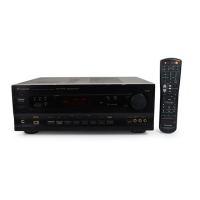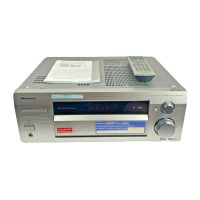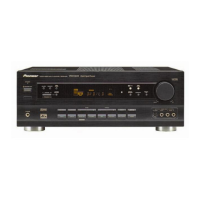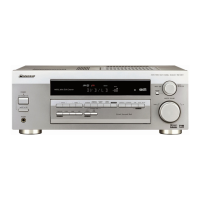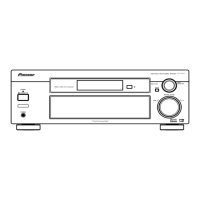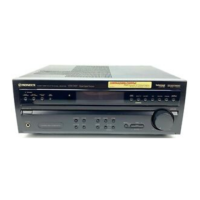
Do you have a question about the Pioneer VSX-D1011-G and is the answer not in the manual?
| Type | AV Receiver |
|---|---|
| Power Output | 100 W per channel |
| THD | 0.09% |
| Input sensitivity | 200 mV |
| Audio Formats Supported | Dolby Digital, DTS, Dolby Pro Logic II |
| Speaker load impedance | 6 ohms |
| Digital inputs | Optical, Coaxial |
| Video Connections | Composite, S-Video |
| Dimensions | 420 x 173 x 465 mm |
| Frequency Response | 10Hz - 100kHz |
| Outputs | Speakers |
Covers CAUTION boxes regarding electrical hazards and proper usage.
Specifies space requirements for optimal heat radiation and ventilation.
Highlights warnings regarding heat dispersal, ventilation, and unit placement.
Guides on video and audio connections for integrating a DVD player and TV.
Diagram and instructions for connecting front, center, surround, and back speakers.
Procedure for mapping digital audio inputs to specific components.
Automates speaker configuration for enjoyable surround sound with minimal effort.
Guidance on video connections required for integrating the television.
Specific instructions for connecting a DVD player, including audio and video.
Instructions for connecting analog audio sources like turntables and cassette decks.
Guide for connecting DVD-Audio or SACD players to multi-channel analog inputs.
Instructions for connecting digital audio sources via coaxial or optical cables.
Detailed guide for connecting front, center, surround, and surround back speakers.
Procedure for changing the receiver's speaker impedance setting.
Explanation of all indicators shown on the receiver's display screen.
Detailed descriptions of each button and dial on the front panel.
Comprehensive explanation of all buttons available on the remote control.
Description of all connectors and jacks located on the rear panel.
Instructions for entering the surround setup menu and selecting options.
Introduces SURRBACK, QUICK, NORMAL, and EXPERT setup methods.
Choices for using surround back speakers: Normal, Second Zone, Front Bi-Amp.
Overview of SPEAKER SET, CHANNEL LEVEL, and CHANNEL DELAY settings.
Setting speaker size, subwoofer presence, and center speaker configuration.
Selecting between FREE (all speakers) or THX (auto SMALL/YES) speaker modes.
Using test tones to precisely adjust the output levels of each speaker.
Steps for playing audio sources and adjusting the master volume.
Procedure for switching between analog and digital audio input signals.
Overview of STEREO, DIRECT, MOVIE, and MUSIC listening modes.
Choosing the decoding method for 2-channel sources in THX Cinema mode.
Mapping digital audio inputs to specific components connected to the receiver.
Introduces expert settings for Crossover, Level, Delay, EQ, Bass Peak, and Dynamic Range.
Determines frequency cutoff for sending bass sounds to subwoofer or large speakers.
Precisely balancing the output levels of each speaker using test tones.
Setting precise delay times for speakers to improve sound depth and localization.
Finalizing delay settings for all speaker channels.
Adjusting speaker response based on room acoustics using test tones.
Balancing speaker volume levels within the EQ settings.
Controlling peak levels for low-frequency effects (LFE) to prevent distortion.
Adjusting sound range to make quiet sounds audible during low-volume listening.
Tips on speaker placement, direction, angle, and distance for optimal surround sound.
Resolving problems related to power, unit response, and fan errors.
Diagnosing problems with sound output, speaker connections, and initial setup.
Diagnosing issues with front, surround, center, subwoofer, or back speakers.
Troubleshooting sound output problems related to digital audio sources.


